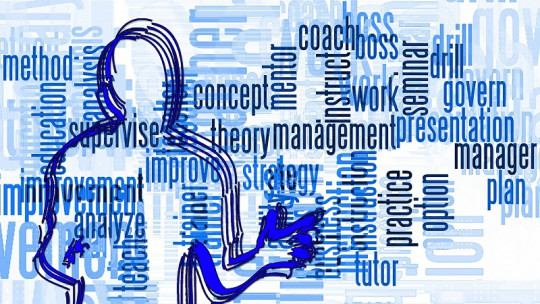
For a coaching process to be successful, it is essential that the coach knows the coaching methodology well and has well-developed qualities such as empathy or active listening, among others. But if you want the support to be more effective and more transformative for the client, knowing tools from other disciplines and methods is essential.
One of the methodologies in which more and more coaches are training is Neurolinguistic Programming. This helps to understand the relationship between thoughts, emotions, language and actions, helping to better understand people, a crucial value for any self-respecting coach.
Although the study of Neurolinguistic Programming is broad, part of it is made up of a series of dynamics that can be used in coaching sessions both to improve coach-client communication, and to make the coachee break down obstacles to pave the way towards their goal. In this article we want to highlight 4 that are extremely useful.
4 dynamics of NLP
Below we briefly detail what each of these powerful NLP dynamics consists of and, above all, what is achieved by using them in coaching sessions.
1. VAK (Basic Display)
Through this dynamic, the coach introduces the coachee into a kind of relaxation-hypnotic state so that, little by little, they experience in a very real way what they would feel once they have reached their goal. That is to say, You are invited to visualize reality with all your senses with the objective achieved
The purpose of this dynamic is to allow the client to project what they want to be, do, feel and have, in order to unlock it. By recreating the desired goal in the client’s mind and making them experience how it would feel to have it accomplished, motivation to continue moving forward increases.
2. Change of beliefs
There are several dynamics whose objective is the same: to identify limiting beliefs and transform them into empowering ones. In one of them, this is staged by tracing a path on the ground in which, step by step, the client becomes aware of the belief, the context in which it occurs, the emotion it triggers, the behavior it generates and the result. .
To work on the limiting belief, the client is invited to indicate what different result they would like to achieve and, to do so, they are accompanied to do the previous path in reverse: What do you have to do differently to get that different result you want?
The dynamics of belief changes are the most used because many of the ‘fears’ of moving towards a goal come from those limiting beliefs. These dynamics not only make the client aware of the beliefs that limit them, but also make them take responsibility and be able to change them and convert them into beliefs that empower them and help them on their path to their goal.
3. Representational systems
This dynamic is especially helpful for the coach since it allows him to better understand his coachee and, above all, to speak ‘the same language’ as his client. This dynamic is based on the idea that each person perceives the world in a different way according to their senses Thus, from the perspective of NLP, there are 3 predominant ways of perceiving the world from which people can be classified as visual, auditory and kinesthetic.
Although the classification is modular and a person does not fit 100% into a representational system, knowing its predominance gives a lot of information about the person and their way of understanding the world and communicating. NLP provides material on recurring verbal elements of each system or non-verbal elements that help the coach better identify which one his coachee belongs to.
Such is the importance of representational systems that it is even considered one of the basic foundations of Neurolinguistic Programming.
4. Internal dialogue
Internal dialogue is the chain of thoughts that promote a specific state of mind. It is continuous and inherent to the human being. Sometimes what occurs is a clash between the two parts of that dialogue, generating an internal conflict that seems difficult to solve.
With this dynamic what is sought is for the client to identify the two parts of his or her internal dialogue that are in conflict (for example, I want to go to the gym, but also stay on the couch), what message each party wants to convey and have both parties come to an agreement.
In this way, not only does the client improve their self-knowledge, but they also learn how to stop the continuous internal dialogue of our brain.
Train in NLP to be a better coach
These 4 dynamics are just a small example of everything that Neurolinguistic Programming offers coaches to be able to perform their professional work better. In addition, training in NLP makes the coach himself also carry out interesting self-knowledge work that will help him improve his personal depth.
In our school D’Arte Human Business School, aware of the value of Neurolinguistic Programming, we have learning this discipline included within our Master in Professional Coaching. But, in addition, anyone who wishes can also do the complete NLP degree to be a master of this methodology. We are the only school that teaches Original NLP and that has among its teaching staff one of the co-creators of the discipline itself: Frank Pucelik.








